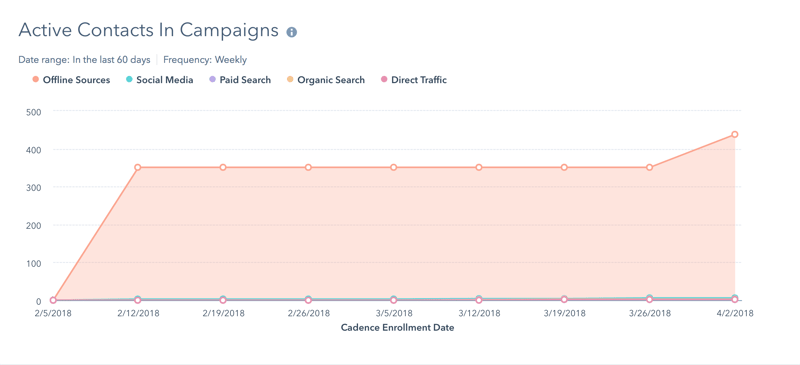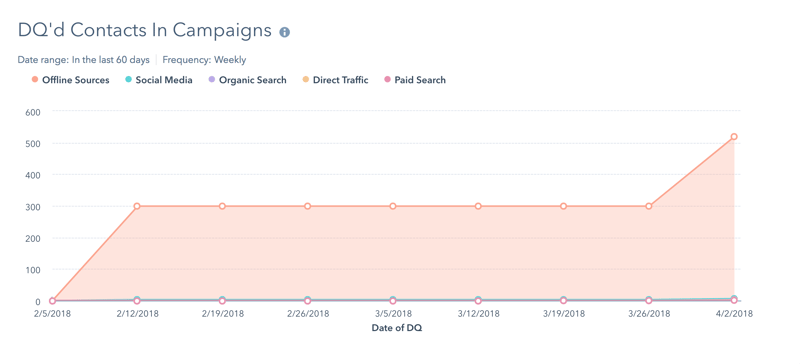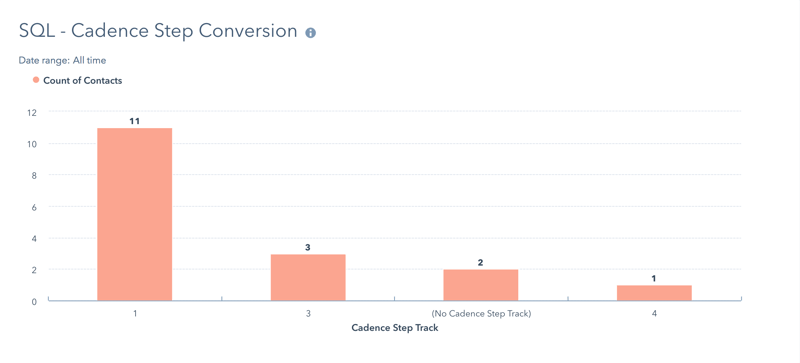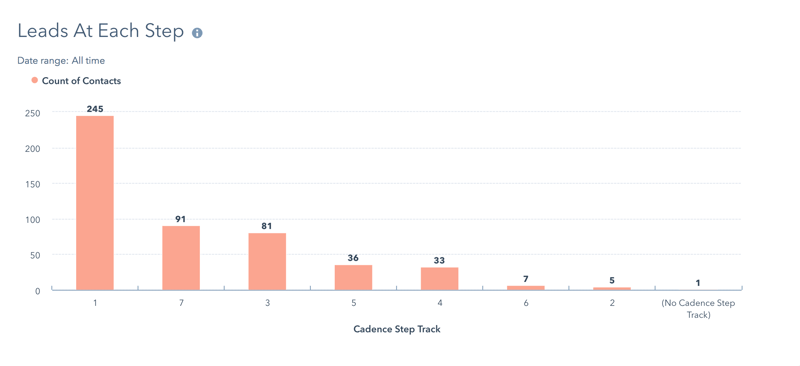 There are two schools of thought when it comes to prospecting effectiveness. One school focuses on quality and maximizing the yield of the process. "Let no good lead go unconverted" is their philosophy.
There are two schools of thought when it comes to prospecting effectiveness. One school focuses on quality and maximizing the yield of the process. "Let no good lead go unconverted" is their philosophy.
The other approach focuses on volume, thinking "What we lack in effectiveness we can make up in volume." As a result, they hire more reps, make more calls and send more emails, continuously ramping up velocity to hit their targets.
Unfortunately, both camps are wrong, and, well, they're kinda right.
Your connect rate (the rate of attempts a salesperson or sales development rep makes to “connect” with their intended target) is the most important metric to use when assessing the effectiveness of the customer acquisition process.
The connect rate focuses on the biggest bottleneck in the sales process, capacity. The limiting factor for salespeople is time, and if your connect rate is too low, it means too much time is wasted. Be careful though, because if it’s too high it may also mean that too much time is being spent here, as too much effort (and time) may be spent in an attempt to reach a lead that could be better spent elsewhere.
In the end, the use of connect rate should solve for maximizing the output of right-fit leads entering the next phase, based upon the limited-resource capacity you have, which is selling time. Note that this output is represented by a hard number, not a percentage. I’d rather have a connect rate of 17% that generates 125 right-fit leads than a 38% connect rate that yields 67.
Identifying your optimal connect rate range (balancing quantity with quality) should be of the utmost strategic imperatives for your sales leadership team. Once this range is determined you can turn your attention to testing ways to enhance it.
To get your started, here are the 7 most common areas that we’ve identified in our work that lead to material improvements in connect rates and right-lead throughput.
1. Different leads require different response times
If you’ve heard that “inbound leads should get a response within five minutes,” you’re in good company. That theory is prevalent. And, while it’s accurate in some situations, it’s not in others.
The reality is that you generate leads for a variety of reasons, from a variety of sources and in a variety of ways. The idea that every lead should be treated the same way is.
Some types of leads should be activated immediately, others should get no outreach and, quite possibly, many fall somewhere in between. You need to align your lead management process with your buyer’s journey and context.
All of this should be documented in a clearly defined demand generation service level agreement. If you’re not getting the connect rate you desire, take a look at your SLA for different types of leads. (If you don’t have one, put that at the top of your action list.)
2. Integrate (and Vary) Your Cadences
I’m amazed by how frequently I see prospecting processes that limit the channels salespeople use to prospect. Some use emails, but don’t call; others call, but only email intermittently, and so on.
Salesloft, a provider of sales automation software, recently released the most comprehensive research I’ve seen on the effectiveness of different cadences. You’ll see the best approaches purposefully integrate multiple modes to create the best results.
Notice that I used the word “purposefully.” Cadences have become de rigueur in sales development but are often looked down upon by sales organizations and salespeople doing more traditional types of prospecting, who typically feel they don’t need such a structure. If you’re not using a cadence, change that - and change it now!
A common cause of poor connect rates is inconsistent outreach. Cadences ensure consistency and provide the baseline to assess, iterate and optimize your approach going forward while also allowing you to implement across the organization.
3. Kill The Crap (Use The Right Playbook)
A very important question: are you utilizing the right approach in your outreach? I regularly see sales teams continuously optimizing their execution only to realize that they’re getting better and better at the wrong things.
To succeed, you must define your game and utilize the right playbook to drive actions. Be sure you’re doing the right things before you expend a whole bunch of energy doing those things better.
4. Improve Lead and/or List Quality
Lead or list quality is often the root of poor connect efforts. Let me share a real-life example of a process we’ve just recently finished assessing.
As this chart
shows, the SDR in this program currently has 451 leads they are actively working:

In the same period of time, 531 leads in this list have been disqualified:

It takes the same time to work a bad lead that it does a good lead, and clearly, this SDR has been saddled with bad leads. Needless to say, the top item in our action list after concluding this assessment is to allocate more resources to list development.
While the example here is primarily an outbound effort (so it’s a list issue), I see the same thing on inbound-focused efforts, as well. A common cause of this is lead scoring, which notoriously score poorly qualified leads well, and often ignore good ones.
5. Personalize and Contextualize Your Outreach Message
If you’re focused on an ideal client profile type and/or a persona or role, it’s a pretty good bet that many others are as well. So, if you’re sending a templated email or making a sales call that is either completely value-less or all about you, don’t expect to have much luck with your connect rate (or your sales process).
The problem here is that marketers and sales executives think about emails, calls and communications as one-to-many, but customers view them through the prism of 1:1. Use your ideal client profile, and buyer personas to craft messaging and conversations that are on-point, interesting, a bit provocative and personal. And if you put the work in up front and combine it with a strong playbook, you can deliver personalized, contextualized messaging at scale.
6. Communicate Like You’re A Real Person
A close cousin to my previous point is how emails are written and calls are scripted (even if there’s not a script). They sound or read like the person sending them is a robot (or, these days, a bot) or is lost or trapped under a file cabinet with an alligator readying an attack.
When crafting any communication strategy, regardless of who or how many people you are planning on communicating with, design it as if you were actually talking with or communicating with a real person in the moment. Write your cadence emails as if you, the individual, were actually sending this to someone you know. Speak in the same way. In short, Be real!
7. Monitor Cadence Compliance
One reason you have to design a cadence is so you can monitor it. If you don’t monitor it, you won’t have the data you need to make smart decisions to optimize throughput. Here are three common areas where monitoring cadence compliance will help you improve your connect rate.
How Many Touches Does It Take to Connect
So, how many licks does it take to get to the center of a Tootsie Pop? Well, I don’t know the answer to that question, but I do know that research shows it takes more and more touches to connect. The most recent research shows that it’s now over eight.
Or, is it?
Here’s data from a client’s campaign that’s been running for just over 30 days. The data reflects the number our touches needed to connect with a lead that becomes a sales qualified lead:

What’s more, when we look at raw connect data, we see more connects made deeper into the cadence cycle--but a much smaller percentage of those advanced to the next stage. While it’s still early to make a call, we’ll begin testing shorter cadence cycles to reduce the number of calls a rep has to make to a somewhat unreachable audience (much lower connect rates), freeing up time and capacity to spend on higher value metrics.
How Effectively is the Connect Cadence Being Implemented?
Sales reps (execs and SDRs) have a lot on their plate, and they’re generally measured primarily on the number of calls made and meetings set. In another analysis of a company’s outreach efforts, we saw some significant issues emerge around how the cadence was being implemented.

A strongly implemented cadence won’t look like this. It should flow pretty consistently from the beginning to the end (with minor decreases along the way for leads that have exited for a variety of reasons). This data shows there is an opportunity to improve results by more effectively managing how leads are added.
How Many Leads Start Getting Worked Only to Be Forgotten
Here’s another report from an analysis that highlights opportunities for improvement:

In this campaign, leads were being deserted at various times for reasons that aren’t clear. One possibility is that leads are using up capacity for the reps they’re assigned to; consequently, by moving them to an inactive status, the rep could handle more leads. The other possibility is that leads were simply deserted, which harms connect rate as well. Understanding this is important to enhancing results.
Connect rate is a crucial metric that belongs in a prominent place for all growth-oriented executives, including both marketing and sales personnel. These 7 tips can go a long way to improving your connect rate and, ultimately, your sales.

 Doug Davidoff
Doug Davidoff